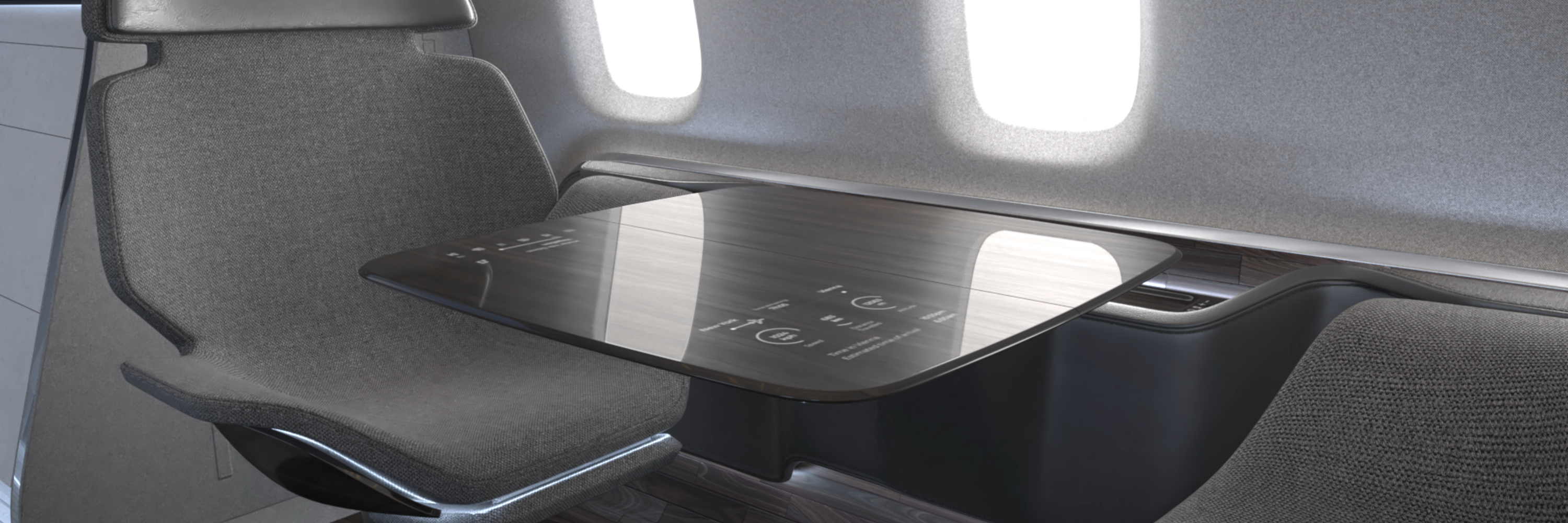- Projecttitle long: WoodSigns (Printed Electronics for Wooden Aircraft Interiors)
- Projectleader: Lukas Rauter
- Project partners:
- Silicon Austria Labs GmbH
- Kompetenzzentrum Holz GmbH
- F/LIST GmbH
- Project duration: 36 months

Wood and wood composites are important building blocks in the Austrian industrial landscape and are currently used primarily in traditional areas of application. Applications range from the construction industry to furniture production and automotive engineering. Through targeted material hybridization and functionalization, the range of applications is constantly expanding. Sustainable and elegant at the same time, the mobility and automotive industry has long since discovered wood for itself, using the raw material directly or in combination with other materials to produce luxurious interior components, among other things. Wood is used and processed in a wide variety of ways, whether as an optical covering, small pieces of furniture or functional components, as a solid material, veneer or hybrid material.
One of the main goals of this project is to show that wood can be transformed into a highly functional and aesthetic material that will be of particular importance as a material of the future due to its sustainability. In times of ecological change, one or the other raw material must give way to new, modern and environmentally friendly materials in the interest of sustainability - but not real wood.
In this project, real wood veneer surfaces, which are part of the interior of jet aircraft, will be designed intelligently and functionally using sustainable technologies. Where switch elements and conventional electronic components such as LED lights are currently used, wood components will replace the plastics and components. In addition to functionality, there is a need to develop continuous, smooth wood surfaces that enhance the visual elegance of the interior. Therefore, real wood substrates will be optimized in this project (e.g. development of veneers with adapted flame retardant treatment) and functionalized to make the underlying lighting visible (transparent wood), to enable direct printing with transparent inks and to integrate wireless printed sensor technology. The goal of these research activities is to enable a broad application of wood as a sustainable, intelligent material, while at the same time preserving the visual elegance of the surface in the best possible way. To achieve this goal, the consortium consists of three partners who bring the best possible expertise to the respective topics.
One research focus is the application of coatings to improve the mechanical properties and functionalization of veneers using resource-saving technologies. This step is undertaken by WoodKPlus.
Another research focus is the additive manufacturing of electronics (sensors, conductors, antennas) on the veneers as a replacement for conventional switches and electronic components. This task is carried out by SAL's internal "ASET" Research Unit. In the interest of sustainability, these sensor components are operated without batteries and are read and powered wirelessly using radio technology. In addition, the displays are produced directly on the wood using printing technologies. Special emphasis is placed on minimizing the use of materials and making the electronics invisible to the user. The use of transparent materials and miniaturized structures on wood will be explored.
At the end of the project, a demonstrator will be presented, a smart wood veneer optimized with surface treatment and functionalized with additive manufacturing methods. Sensor and display elements will interact with each other and then this wireless interaction will be demonstrated. The sensor and printing technologies used in combination with the real wood veneers will be characterized and investigated in detail. The researchers from F/LIST will measure the influence on the properties of these veneers after subsequent coating. Furthermore, the demonstrators will be tested for their suitability for use in aviation and their (low) flammability.
The smart functionalization of wooden components for aircraft interiors envisaged in the project will multiply the possibilities of using this natural raw material for many applications in the digitalized future, thus also creating significant added value in terms of sustainability and circular economy.




DI Dr. Lukas Rauter
Scientist | Advanced Sensor & Electronics Technologies
e-mail: contact@silicon-austria.com

Member Area
Login
